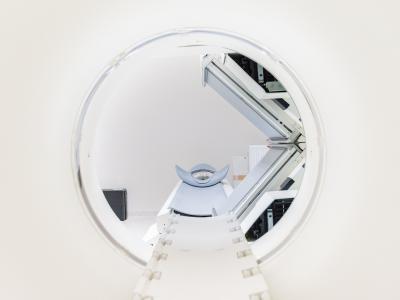Traditional LDDMM vs Deep Learning. Deformation fields on NIREP and OASIS

- Citation Author(s):
-
Monica Hernandez (University of Zaragoza)
- Submitted by:
- Monica Hernandez
- Last updated:
- DOI:
- 10.21227/d9mb-pn47
- Data Format:
- Research Article Link:
- Links:
 282 views
282 views
- Categories:
- Keywords:
Abstract
This dataset acompanies our article titled "Insights into traditional Large Deformation Diffeomorphic Metric Mapping and unsupervised deep-learning for diffeomorphic registration and their evaluation", Computers in Biology and Medicine, 2024. This paper explores the connections between traditional Large Deformation Diffeomorphic Metric Mapping methods and unsupervised deep-learning approaches for non-rigid registration, particularly emphasizing diffeomorphic registration. The study provides useful insights and establishes connections between the methods, thereby facilitating a profound understanding of the methodological landscape. The methods considered in our study are extensively evaluated in T1w MRI images using traditional NIREP and Learn2Reg OASIS evaluation protocols with a focus on fairness, to establish equitable benchmarks and facilitate informed comparisons. Through a comprehensive analysis of the results, we address key questions, including the intricate relationship between accuracy and transformation quality in performance, the disentanglement of the influence of registration ingredients on performance, and the determination of benchmark methods and baselines. We offer valuable insights into the strengths and limitations of both traditional and deep-learning methods, shedding light on their comparative performance and guiding future advancements in the field.
Instructions:
The dataset files contain the registration results of the following methods:
- Traditional methods:
ANTS, Stationary LDDMM and PDE-constrained LDDMM
- Deep learning methods:
VoxelMorph, SyMNet, LapIRN, SynthMorph, TransMorph, Mermaid, and NODEO
Instructions:
- Inside each file you can find the registration results conducted on NIREP16, OASIS Learn2Reg22, and IXI datasets.
- These datasets are described in the paper and the supplementary material. They have been extensively used in the evaluation of non-rigid registration methods.
- The registration results are stored in .mat format. They can be loaded using load instruction in Matlab. Inside, you can find the variables needed to
reproduce the evaluation metrics of our work.
For example, inside VoxelMorph data file, one can find the folder VoxelMorph_GIT_NIREP16 corresponding with the registration results of the GIT
model of VoxelMorph in NIREP16 dataset. The DICE matrix can be found in the file NIREP16S_VoxelMorph_GIT_2021_DICES.mat. Indeed, inside
VoxelMorph_GIT_2021_NIREPS_fixed**_moving01.mat one can find the registration results between the **th image selected as moving and the
first image of NIREP dataset selected as fixed. In particular, the file contains the variables warp with the displacement field of the transformation
and warped with the warped moving image. For example, the files for traditional methods such as Stationary LDDMM also include the variable v
which represents the vector field used in the stationary parametrization and the history for monitoring interesting values during optimization.








